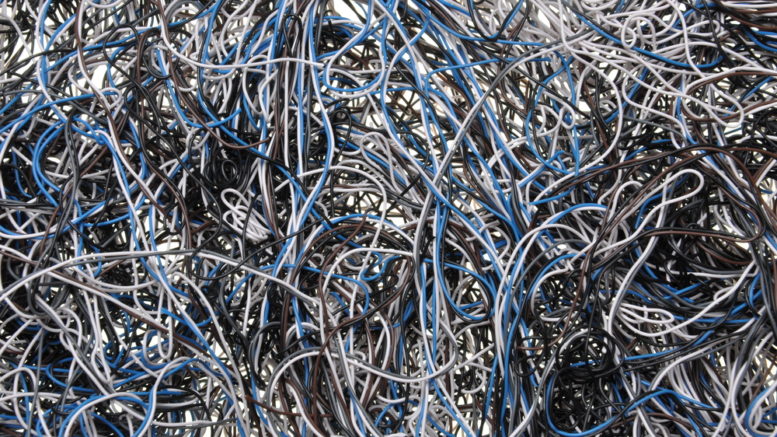Remember when they used to say, “Measure twice, cut once?” It’s still a good idea. If you plan a big project that includes cables, it’s a good idea to plan things out first. Here are some things to think about:
Do you have enough room in the walls?
It’s a good idea to know where the conduits are in your walls if you’re going to fish cables through. If you’re lucky there might be some room to fish cables adjacent to power or utility lines. It’s also a good idea to use a stud finder to figure out where the firebreaks in the walls are. it can be really frustrating to fish a cable halfway down the wall and not realize that you need to cut drywall to drill through a firebreak.
Plan cable lengths
There are a lot of variables that can affect whether or not you get good reception from your TV or satellite dish and one of them is cable length. We have a number of resources including amplifiers that can help, but it’s a good idea to know how many cable-feet you’re running when we try to recommend one for you.
Put accessories and splices where you can get at them
It’s a very bad idea to splice cables inside the wall, and it’s even a worse idea to wall up an antenna or amplifier. We all want the cleanest possible installation but splices are the most common failure points in a system and it’s a bad idea to put them where you can’t get to them.
Fail to plan… plan to fail
It’s also a good idea to create some basic plans, either in the computer or on paper so you’re able to do some diagnosis if things do go down. Include cable lengths, types, and anything specific you had to do that might not be immediately obvious to someone looking later.
Document, document, document
Make yourself a basic map of what goes where. Keep it on hand so you’ll have some idea what’s inside those walls. It’s also a good idea to label the cables on both sides. I find that a little bit of masking tape can make a very simple surface to write on, so you can help know what’s right in front of you.
Pick up a cable toner
It’s a good idea to have a cable mapper on hand. Something like this helps you figure out where coax cables are, and which ones you have. It’s a little pricey but it will pay for itself the first time you use it, because it’s just so easy to use. There are similar models for Ethernet cables as well
Always remember to run spare lines
A little bit of extra cable won’t cost much. On the other hand, fishing a whole new set of cables through the walls can be very expensive. Put a few spare lines in the walls while you’re doing the work. This is especially true if you’re working on new construction where the drywall isn’t in yet. It takes minutes and pennies to run extra cable at that point, while you’ll pay through the nose to have cables fished through the walls at a later time.





